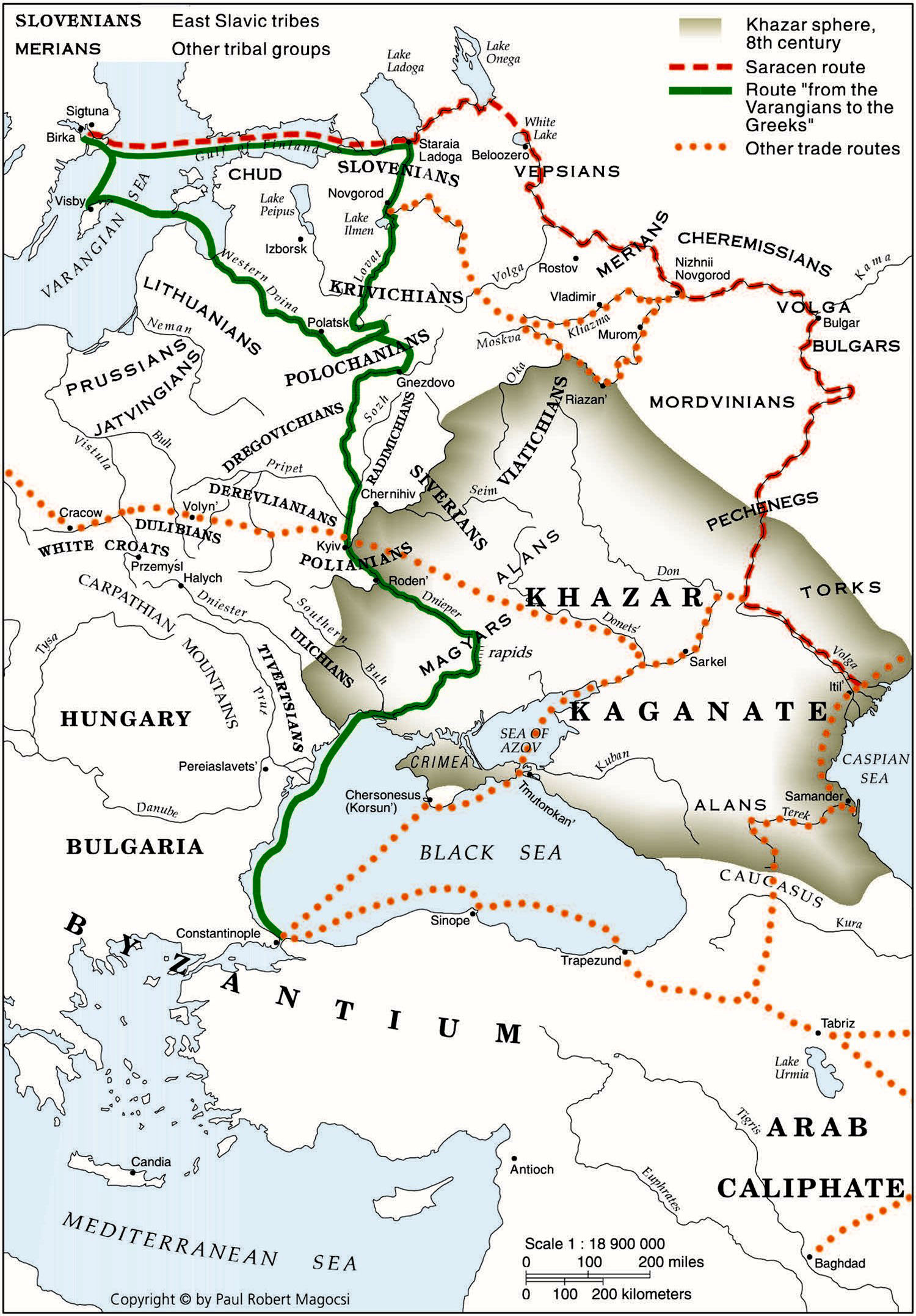650–960
During the early Khazar era, the major trade routes connecting Central Asia, the Arab world, and Byzantium with northern Europe passed through Khazar territory. Prominent in this trade were the Varangian Rus' (the name for Vikings from what is today eastern Sweden, who ruled the medieval state of Kyivan Rus' between the 9th and 11th centuries). The Varangian merchant traders brought furs and slaves to the Khazars in exchange for silver, spices, and luxury items that the Khazars acquired through their extensive trading networks. As experienced seafarers, the Varangians eventually discovered a more direct route — via the Baltic Sea, several rivers and lakes to the Dnieper River, and the Black Sea — to Constantinople, the central commercial hub of the time.
Jews, among others in the Khazar Kaganate, engaged mainly in trade and crafts. The Khazars took 10 percent of the value of the goods that passed through their lands, presumably providing protection for the merchant caravans in return.
The primary livelihood of the Slavic tribes was agriculture and raising cattle; they harvested grains, fished, hunted wild animals, and collected honey and wax from bees. They traded their products locally in the horody (hill forts), where artisans had well-developed pottery, weaving, and metal industries, and internationally through the Khazars' trading networks.
sources
- Paul Robert Magocsi, A History of Ukraine (Toronto, Second Edition, 2010), 49–50;
- Paul Robert Magocsi, Yohanan Petrovsky-Shtern, Jews and Ukrainians: A Millennium of Co-Existence, Second Revised Edition (Toronto 2018), 14;
- Peter B. Golden, "Khazaria," YIVO Encyclopedia of Jews in Eastern Europe (2010).
930
The Kyivan letter, written in Hebrew and signed by representatives of the Jewish community of Kyiv, is perhaps the first known documentary record relating to Kyiv. The letter endorses the fundraising effort of a Kyivan Jew, who had fallen on hard times, as he was held liable by non-Jewish creditors for his brother's debts after the latter was robbed and slain. The letter was found in the Cairo Geniza — a treasure trove of Jewish manuscript fragments and documents dating from the ninth to nineteenth centuries, discovered in a Cairo synagogue. Linguists and historians have been intrigued by the single-word Turkic runiform inscription at the bottom of the letter (translated as "I read it"), suggesting that the signatory representing the Jewish Khazaric community in Kyiv was illiterate in Hebrew.
Read more...
The only surviving document from the Khazarian administration, the Kyivan letter also illustrates socio-economic circumstances and community ties between Kyiv's Jewish community and Jewish communities in other countries.
sources
- Omeljan Pritsak, "The Pre-Ashkenazic Jews of Eastern Europe in Relation to the Khazars, the Rus' and the Lithuanians," in Ukrainian-Jewish Relations in Historical Perspective, Peter Potichnyj & Howard Aster, eds. (Edmonton, 1988), 8;
- University of Cambridge Digital Library, Letter (T-S 12.122).


